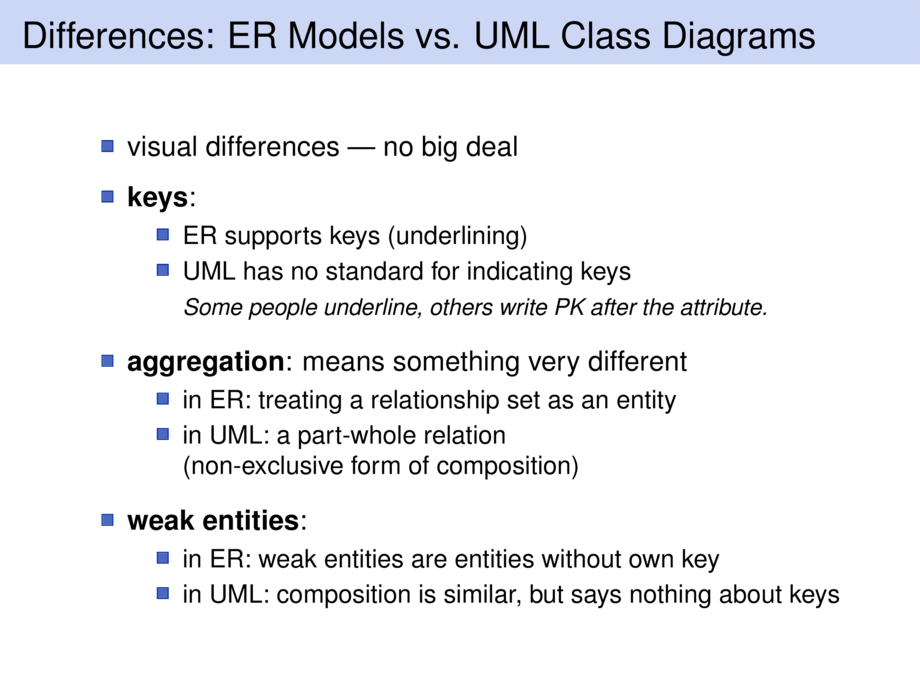



































































































98/98
\begin{frame}
\frametitle{Differences: ER Models vs. UML Class Diagrams}
\begin{itemize}
\item visual differences --- no big deal
\medskip
\item \emph{keys}:
\begin{itemize}
\item ER supports keys (underlining)
\item UML has no standard for indicating keys\\
\remark{Some people underline, others write \textit{PK} after the attribute.}
\end{itemize}
% \pause
% \begin{exampleblock}{}
% \begin{minipage}{.4\textwidth}
% In case of composition in UML, one may use \emph{association qualifiers} to indicate the key.
% \end{minipage}~\quad~%
% \begin{minipage}{.49\textwidth}
% \begin{center}
% \scalebox{.8}{
% \begin{tikzpicture}
% \umlclass{book}{
% +ISBN \\
% +title \\
% +author
% }{
% }
% \umlclass[x=5]{section}{
% +nr \\
% +title
% }{
% }
% \node [rectangle,draw,fill=yellow!20,anchor=west] at (book.east) (isbn) {ISBN};
% \umlcompo[arg1=$1..1$,mult2=$\,$,arg2=$0..*$,mult2=$\,$,pos2=0.8]{isbn}{section}
% \end{tikzpicture} \vspace{-2ex}
% }
% \end{center}
% \end{minipage}
% \end{exampleblock}
\medskip
\item \emph{aggregation}: means something very different
\begin{itemize}
\item in ER: treating a relationship set as an entity
\item in UML: a part-whole relation\\(non-exclusive form of composition)
\end{itemize}
\medskip
\item \emph{weak entities}:
\begin{itemize}
\item in ER: weak entities are entities without own key
\item in UML: composition is similar, but says nothing about keys
\end{itemize}
\end{itemize}
\end{frame}

